
Cosimo de Medici Facts often leave people curious about who he was and why he matters so much in history.
It can be overwhelming to know where to start if you want to understand how one man shaped Florence and helped spark the Renaissance.
This article will share key moments and insights about Cosimo de Medici that help explain his impact, making it easier to see why his story is still important today.
Through these carefully selected facts, you will discover what sets Cosimo apart and how his choices changed European culture, politics, and art.
Get ready to explore the legacy and influence of this powerful figure.
1. Cosimo de’ Medici was born on April 10, 1389.
Cosimo de’ Medici was born on April 10, 1389, in Florence.
He belonged to the powerful Medici family, known for shaping the political and cultural life of Renaissance Florence.
His father, Giovanni di Bicci de’ Medici, was already respected in Florence for his business skills, especially in banking.
From a young age, Cosimo learned about finances, trade, and international banking through the Medici bank.
This experience shaped his future in both banking and politics.
Growing up during the late 14th and early 15th century, Cosimo saw the economic growth and complex politics of the Florentine Republic.
This early exposure prepared him for his later responsibilities as a de facto ruler of Florence.
The Medici family strongly influenced the rise of Renaissance Florence.
Cosimo’s birth brought another promising figure into a family that significantly contributed to Florence’s economy, art, and culture.
Cosimo de’ Medici later became one of the most influential figures in the House of Medici.
He used his early business lessons to consolidate the Medici family’s power and increase the family’s influence in Florence and beyond.
2. He established the Medici family as effective rulers of Florence.
Cosimo di Giovanni de’ Medici played a major role in shaping the politics of Florence.
In the early 15th century, he used his wealth and influence to become the de facto ruler of the city.
Though he never took an official title, his leadership marked the rise of Medici power consolidation.
Cosimo’s control over the Medici bank gave him leverage in Florence politics.
Managing papal finances and supporting the city’s economy, he built a network of loyal allies among merchants and politicians.
This financial strength made the Medici family the most powerful in the region.
Many people referred to Cosimo as the uncrowned monarch of Florence, since he ruled without holding a formal government office.
He had a significant say in public decisions, appointments, and laws.
His leadership brought stability to the Florence Republic.
Under Cosimo, the city experienced economic progress and cultural achievements.
Cosimo’s influence extended beyond politics.
He supported art, architecture, and humanism, helping to shape Florence’s reputation as a center of the Italian Renaissance.
3. Cosimo ruled Florence as an uncrowned monarch starting in 1434.
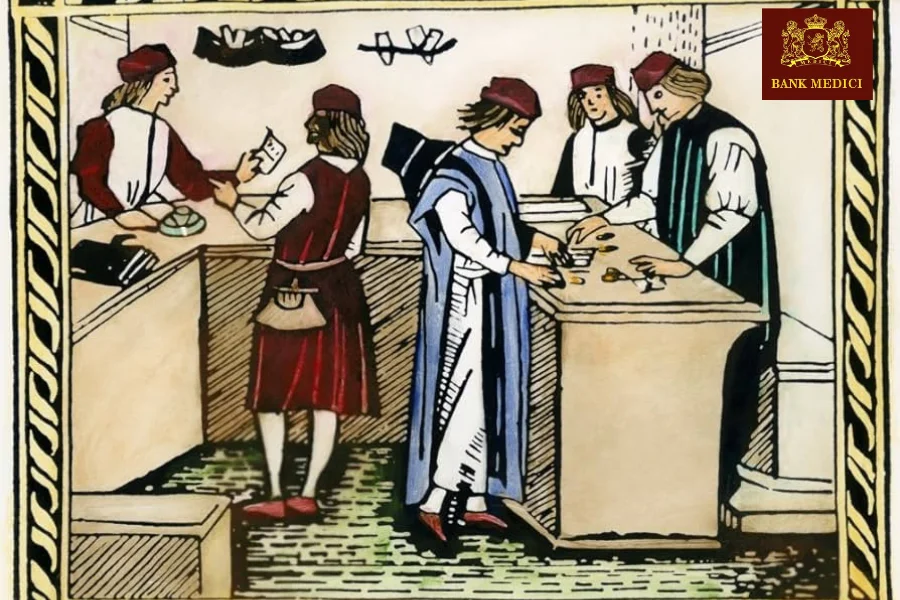
Cosimo di Giovanni de’ Medici took control of Florence in 1434.
Although he never held any official royal title, he became the city’s de facto ruler and shaped its politics for decades.
This marked the beginning of the Medici family’s significant rise during the Renaissance.
Cosimo’s power came from wealth, connections, and careful political moves.
His influence ran so deep that many saw him as the leader behind almost every important decision in Florence.
Even with no formal title, people referred to him as an uncrowned monarch.
Cosimo’s authority grew from his success as a banker and his close handling of papal finances.
The enormous wealth of the Medici bank allowed him to support friends and fund public projects.
This gave him both popular and political support in the city.
By steering the government, Cosimo ensured the Medici family stayed in power.
His leadership helped transform Florence into a center for art, science, and culture during the Renaissance.
Cosimo made Florence a hub of artistic and economic growth through his negotiation and financial management skills.
He managed behind the scenes, but his political power was well known among the citizens and rival families.
4. He was a pioneering banker who expanded the Medici bank.
Cosimo di Giovanni de’ Medici was a leading figure in banking during the early Renaissance.
He inherited the Medici bank from his father, Giovanni di Bicci de’ Medici, who first made the family wealthy and influential in Florence.
Cosimo used his skills to make the bank even more powerful and vital.
The Medici bank became one of Europe’s most respected financial institutions.
Cosimo improved its operations by opening branches in significant cities, including Rome, Venice, London, and Geneva.
These new locations helped grow the Medici family’s influence across Italy and beyond.
This growth in banking also meant increased political power for the Medici family.
Cosimo became a key player in Florence politics by handling papal finances and working with wealthy clients.
He used this money and authority to become the de facto ruler of Florence without holding a formal title.
The Medici bank’s success supported Cosimo’s reputation as one of the wealthiest men in Europe during the 15th century.
He used this capital to support art, architecture, and learning in Renaissance Florence.
This made the Medici family cultural leaders as well as bankers.
Cosimo’s banking achievements allowed him to strengthen the Medici lineage.
The trust that people and governments placed in the Medici bank helped ensure the family’s legacy and long-term influence during the Renaissance.
5. Cosimo was a major patron of Renaissance artists and architects.
Cosimo di Giovanni de’ Medici was vital in supporting the arts during the early Renaissance.
As the de facto ruler of Florence, he used the Medici family’s wealth to sponsor painters, sculptors, and architects.
His patronage helped make Florence a center of art and culture.
He supported famous artists such as Donatello, Fra Angelico, and Brunelleschi.
Cosimo funded major projects like the San Lorenzo Church’s reconstruction and the Medici Palace’s completion.
These works showcased the power and taste of the Medici dynasty.
Cosimo’s influence stretched beyond art.
He invested in architecture, which improved the city’s appearance and cultural standing.
By building libraries and supporting scholars, he encouraged the spread of humanism in Renaissance Florence.
This helped Florence become a model for other European cities.
His investments were not only about beauty.
Cosimo also used art and buildings to strengthen his family’s political power.
The Medici palace and church projects were bold symbols of Medici influence in Florence’s public life.
This approach helped secure his position as an uncrowned monarch and shaped Florence’s political landscape.
Cosimo’s dedication to art patronage became a tradition within the Medici family.
Later generations continued his legacy by supporting even more artists and architects.
6. He supported Filippo Brunelleschi’s work on the Dome of Florence Cathedral.
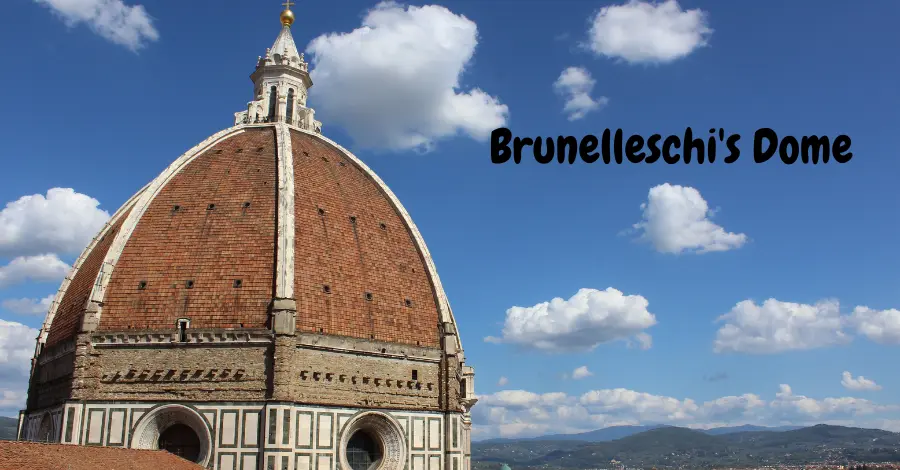
Cosimo de’ Medici played a crucial part in the success of the Dome of Florence Cathedral.
As a leading banker and de facto ruler of Florence, he allowed the project to move forward.
Without the Medici family’s financial support, creating such an architectural feat would have been difficult.
Filippo Brunelleschi, though skilled, needed patrons to realize his ambitious design for the cathedral’s dome.
Cosimo used his influence and resources from the powerful Medici bank to support Brunelleschi’s work.
This act showed the Medici family’s deep commitment to art patronage in Renaissance Florence.
The collaboration between Cosimo and Brunelleschi resulted in one of the most admired domes in the world.
The dome symbolized Florence’s cultural influence and the Medici legacy.
It also highlights the Medici’s contributions to arts and architecture during the 15th century.
This project increased the prestige of both Florence and the House of Medici.
It linked the family name to innovation and beauty in Renaissance architecture.
Cosimo set a high standard for Medici patronage by sponsoring artists like Brunelleschi during his era.
Cosimo’s role in this project helped make Florence a center of creativity and humanism.
The dome shaped the city’s skyline and the course of the Florentine Republic’s history.
7. Cosimo was known as the ‘Father of Renaissance Art.’
Cosimo de’ Medici earned the title “Father of Renaissance Art” because he was one of the earliest and most influential patrons of the arts in Renaissance Florence.
His support helped many well-known artists get their start.
He used his Medici wealth and influence as an influential banker and politician to fund painters, sculptors, and architects.
Cosimo’s patronage made Florence a center for creative talent and innovation in the 15th century.
The Medici family paid for constructing and decorating important buildings, such as churches and libraries.
Cosimo directed funds into projects that featured works from artists like Donatello and Fra Angelico, helping these names become famous.
Cosimo believed art and learning were tied to the city’s and people’s health.
He wanted Florence to be seen as a center of humanism and culture, where artists and thinkers could thrive.
Under Cosimo’s leadership, the city enjoyed new art, architecture, and learning.
This long-term impact on Florence’s economy made other cities admire Medici’s patronage.
Cosimo’s actions set a pattern for later members of the Medici dynasty.
He showed that political power and artistic sponsorship could work together to build a lasting legacy for the Medici family history.
8. He was an avid bibliophile who collected rare manuscripts.
Cosimo de’ Medici had a strong love for books and learning.
He sought out rare and vital manuscripts across Europe, which played a significant role in spreading humanism in Renaissance Florence.
He asked agents and scholars to travel widely and look for ancient manuscripts.
These agents visited libraries, monasteries, and universities, bringing back precious texts for Cosimo’s collection.
His passion helped save many works of Greek and Roman authors that might have otherwise been lost.
Cosimo’s collection included valuable works on philosophy, science, and literature.
He established one of the first public libraries in Florence, the San Marco Library, making knowledge available to scholars and the public.
This continued the Medici tradition of supporting education and learning in Florence.
Because of his dedication to collecting manuscripts, Cosimo strengthened the cultural influence of the Medici family.
His library became a center for intellectual exchange and artistic growth.
9. Cosimo’s political power was consolidated through strategic alliances.

Cosimo di Giovanni de’ Medici strengthened his hold on Florence through smart alliances.
He used friendships and partnerships with influential families to support his position in the city’s government.
Many saw him as the de facto ruler, even without any official royal title.
By aligning himself with bankers, politicians, and merchants, Cosimo gained access to important resources and inside information.
Relationships with these key figures helped shield him from rivals and made it difficult for anyone to challenge the Medici’s influence.
One of his most crucial moves was creating a political group loyal to him.
By 1458, he had formed a Senate of one hundred trusted supporters, which allowed him to control major decisions in Florence politics.
This careful networking allowed Cosimo to steer the fate of the Florentine Republic in his favor.
Cosimo’s alliances also extended beyond Florence.
He worked closely with the Church and managed Papal finances, making the Medici bank a powerful institution in Renaissance Italy.
These ties gave the House of Medici a strong foundation for becoming a leading political dynasty during the Renaissance.
10. He maintained influence without holding an official title for much of his rule.
Cosimo de’ Medici built his power in Renaissance Florence without holding an official government title for much of his life.
He used his wealth from the Medici bank to influence the city’s politics.
He carefully formed alliances with other wealthy families and key political figures.
Cosimo became the de facto ruler of Florence.
He made important decisions, guided elections, and managed state affairs from behind the scenes.
Officials often followed his advice because of his reputation and significant financial resources.
This method of indirect rule let Cosimo avoid threats and rivals who might accuse him of trying to take over the government.
He presented himself as a private citizen dedicated to the well-being of Florence.
Still, everyone understood that real power rested with him and the House of Medici.
Foreign rulers and local leaders visited him to discuss major city and state issues.
His advice carried weight in matters of politics, justice, and finance.
Cosimo protected himself and his family from attacks by never claiming an official government title.
He maintained control through subtle influence and patronage instead of force or public office.
11. Cosimo played a key role in developing Florence’s cultural and political landscape.
Cosimo di Giovanni de’ Medici became the de facto ruler of Florence during the early 15th century.
His strong leadership helped establish the Medici family’s reputation as political and cultural leaders.
He worked behind the scenes to guide the Florence Republic, using his wealth and bank connections to shape the city’s future.
Cosimo valued the arts and invested considerable sums in supporting artists and architects.
He helped create many Renaissance masterpieces and public buildings through his artistic sponsorship.
His support for figures like Donatello and Brunelleschi made Florence a center for culture and art.
He also had a lasting effect on the city’s political life.
By building alliances and wisely spending Medici wealth, Cosimo managed the Medici family’s consolidation of power, helping the Medici family become a leading political dynasty in Italy.
His skills as a banker ensured Florence’s economy stayed strong, which enabled him to sponsor even more projects.
Cosimo’s political leadership often went unrecognized by official titles, yet his influence remained clear in almost every decision Florence made.
He focused on keeping the city stable and prosperous, and many called him the “uncrowned monarch” of Florence.
12. He was the son of Giovanni di Bicci de’ Medici, founder of the Medici bank.
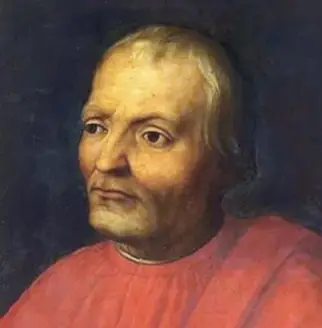
Cosimo di Giovanni de’ Medici was born into the famous Medici family as the eldest son of Giovanni di Bicci de’ Medici.
Giovanni played a key role in shaping the history of Florence by founding the Medici bank.
The Medici bank became one of Europe’s most powerful and respected financial institutions during the 15th century.
This immense wealth gave the Medici family significant influence over the Florence economy and strong connections across Italy and beyond.
Giovanni di Bicci used his banking success to influence Florence politics quietly, yet he avoided holding any official political office.
He helped his family build a reputation as loyal supporters of the Florence Republic.
His wisdom and leadership laid the groundwork for his son Cosimo to rise in both financial power and political leadership.
With this strong base, Cosimo inherited wealth and the trust and respect of Florence’s bankers, merchants, and citizens.
The Medici bank’s success and influence allowed Cosimo to support art patrons and sponsor architecture.
He played a central role in making Florence a center of cultural influence during the Renaissance.
13. Cosimo was instrumental in preserving the republic’s facade while exercising de facto rule.
Cosimo di Giovanni de’ Medici held great political power in Renaissance Florence. He did not rule openly as a king or dictator.
He worked behind the scenes to maintain the appearance of a republic while controlling key government decisions.
He allowed official councils and public offices to exist. Cosimo used his influence and the Medici’s wealth to ensure loyal supporters filled the most important roles.
This strategy helped him avoid direct opposition from rival political families. Historians often call Cosimo the de facto ruler of Florence.
He had authentic leadership without holding an official title as head of state. Citizens still believed they lived in a republic, even as the real power rested with the Medici family.
Cosimo’s control of the Florence Republic lasted for decades. He was respected as a wise politician who kept peace and stability in the city.
His method of preserving traditional systems while quietly directing them became a hallmark of Medici rule. This approach allowed the Medici family to strengthen their hold on Florence without triggering major conflicts.
Cosimo’s careful leadership made him one of the most influential figures in 15th-century Italian politics. The way Cosimo balanced public institutions with private authority is a key part of the Medici family history.
14. He laid the foundation for Medici dominance that lasted over a century.
Cosimo di Giovanni de’ Medici became central in 15th-century Florence politics. His skills as a banker and politician allowed him to strengthen the Medici family’s position in the city.
He expanded the Medici bank and managed papal finances. This gave the family unmatched wealth and influence.
With these resources, he acted as a de facto ruler despite holding no official title. Cosimo secured loyal supporters through careful networking and financial strategy and weakened his rivals.
His approach helped the House of Medici maintain power without violence or force. Cosimo’s leadership turned him into an uncrowned monarch in Renaissance Florence.
He also became famous for his art patronage, supporting artists, architects, and scholars. This support led to a cultural transformation that shaped the Renaissance.
The Medici palace symbolized their political and cultural strength in the city. Because of Cosimo’s planning, the Medici family ruled Florence for over a hundred years.
The systems he established allowed his descendants to control Florence’s society and politics across generations. His legacy as a founder of a political dynasty is still remembered as a major part of the Medici family’s history.
15. His leadership style combined diplomacy, wealth, and cultural patronage.
Cosimo di Giovanni de’ Medici was key in shaping Renaissance Florence. He used his financial resources, gained from the powerful Medici bank, to support both politics and the arts.
As a skillful banker and politician, Cosimo managed to keep power without holding any official title. Many saw him as Florence’s “uncrowned monarch” because he directed Florence’s politics behind the scenes.
He valued diplomacy and often chose peaceful negotiations over conflict. His wealth allowed him to create strong alliances by supporting other vital families and patronizing the arts and architecture.
Cosimo’s patronage of artists, architects, and scholars strengthened Medici influence. By investing in art, culture, and education, he enhanced both his family’s status and the city’s reputation.
Through careful diplomatic moves and strategic spending, Cosimo built lasting Medici power. The Florence economy thrived during his leadership, partly thanks to his support for craftsmen and intellectuals.
Cosimo’s style shaped the Medici family history for generations. His successful blend of wealth, political skill, and cultural influence kept the Medici dynasty central to Florence’s development in the 15th century.
Frequently Asked Questions
Cosimo de’ Medici was key in shaping Florence during the early Renaissance. His leadership, financial abilities, and support for the arts impacted generations and left a lasting mark on European history.
What are some interesting facts about Cosimo de Medici?
Cosimo de’ Medici was born on April 10, 1389. He became the head of the Medici family and established their control over Florence.
He supported artists and architects such as Donatello and Brunelleschi. Cosimo helped make Florence a center of culture during the Renaissance.
He also expanded the family’s banking empire.
What did Cosimo the First do?
Cosimo the Elder, also known as Cosimo de’ Medici, led Florence from 1434. He used his wealth to control politics without holding a formal title.
Cosimo helped stabilize Florence, encouraged learning, and funded public buildings. Many historians credit him with paving the way for later Medici successes.
What best describes Cosimo de’ Medici?
Cosimo de’ Medici is best known as a powerful Florentine statesman, banker, and arts patron who was sometimes called “the father of his country.”
He ruled through influence and alliances and helped foster the spirit of the Italian Renaissance.
What happened to Cosimo in Medici?
Cosimo de’ Medici died in 1464 after leading Florence for about 30 years. After his death, the people buried him in the Church of San Lorenzo.
He was honored with the title Pater Patriae, meaning “Father of the Fatherland” by the city.
Was Cosimo de Medici a good leader?
Historians regard Cosimo de’ Medici as an effective leader. He maintained stability and peace in Florence, supported businesses, and made Florence more affluent and influential.
His patronage helped start the careers of several important Renaissance artists. Cosimo ruled fairly and gained respect from many citizens.
What illness did Cosimo Medici have?
Cosimo de’ Medici reportedly suffered from gout for much of his adult life. This illness often caused him pain and limited his movement, especially in later years.
What was Cosimo de Medici’s nickname?
Cosimo de Medici was often called “Pater Patriae,” which means “Father of the Fatherland.” The name showed the people’s respect for his leadership and his impact on Florence.
How much money did Cosimo de’ Medici have?
The exact amount of Cosimo de’ Medici’s wealth is hard to know, but he was considered one of the wealthiest men in Europe during his life. As the head of the Medici Bank, his fortune made him highly influential in Florence and beyond.
Who was the most powerful Medici?
Cosimo de’ Medici is sometimes considered the most powerful for founding the family’s rule. Later members like Lorenzo de’ Medici, also known as Lorenzo the Magnificent, were also influential.
The family’s power extended for centuries, with several members becoming popes.
What does Cosimo mean?
Cosimo is an Italian name derived from the Greek word “Kosmas, ” which means “order” or “decency.”
The name reflects ideals of stability and balance. These qualities matched Cosimo’s leadership style.
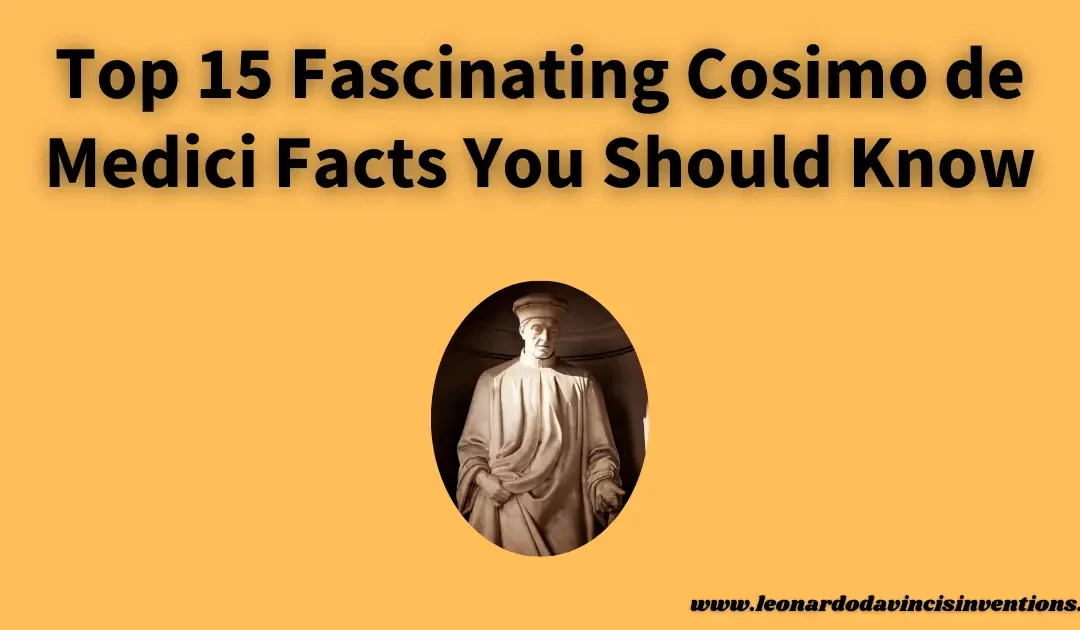

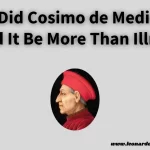

 Leonardo Bianchi,
the creator of Leonardo da Vinci's Inventions.
Thank you for visiting
Leonardo Bianchi,
the creator of Leonardo da Vinci's Inventions.
Thank you for visiting